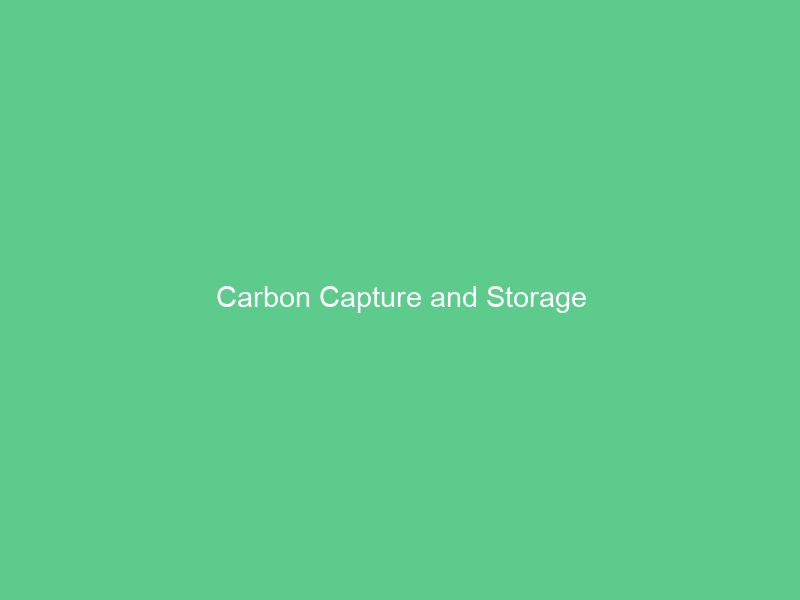Carbon capture and storage (CCS) is an emerging technology which enables CO2 to be collected, captured, stored temporarily or used to manufacture products like chemicals or fuels. Captured CO2 is stored underground into porous rock formations at depths greater than one kilometer for permanent storage.
CCS are generally divided into two groups, natural/biological and geological.
Capture
Carbon Capture and Storage technologies aim to prevent greenhouse gases such as carbon dioxide from reaching the atmosphere by collecting it at its emission source. They work by collecting CO2 emissions from power plants, steel mills, cement factories, petrochemical facilities as well as coal- and gas-powered vehicles before entering the atmosphere.
Captured CO2 must be transported and stored long term in an inaccessible area for long term. Two primary methods are available – geological storage or ocean storage. Pumping carbon into deep underground geological formations like depleted oil reservoirs or coal beds is one option; another involves placing it directly in an ocean container.
TWI supports this approach with their 45Q tax credit for CCS equipment.
Transport
CCUS goes beyond simply collecting CO2 from emissions sources or directly from the atmosphere to include transporting and storing it; with injection into geological formations deep underground the most popular method, though other forms such as concrete production, chemicals manufacturing or renewable energy production could also benefit.
To make CO2 transportation cost-effective, it must first be compressed and liquefied to reduce its volume. Pipeline networks already exist worldwide to transport natural gas; these can easily be modified for carrying CO2. Ships or trucks may also carry it, though their efficiency may be lessened by doing so.
At its destination, CO2 is injected into geological formations where it will remain permanently stored. Possible storage locations could include depleted oil and gas reservoirs as well as saline formations.
Storage
Carbon capture and storage technologies capture CO2 from emissions, transporting it underground safely for storage so as to not contribute to climate change. This practice is known as point-source capture or direct air capture and storage (DACCS). Carbon capture technologies may also remove historic carbon from the atmosphere through bioenergy with carbon capture and storage (BECCS).
At its storage site, captured CO2 is compressed and deeply chilled before being transported by pipeline or ship for permanent storing in secured underground geological formations such as used oil and gas reservoirs or deep saline formations.
At the storage site, carbon can either be “sequestered” or utilized to produce low-carbon products like concrete, synthetic fuels and chemicals – an approach known as utilization that significantly lowers costs by creating an economically feasible path towards zero carbon energy production.
Utilization
Carbon Utilization and Storage (CCUS) reduces greenhouse gas emissions from sources like fossil fuel-burning power plants and industrial facilities that produce cement, steel, chemicals or fertilizers by collecting CO2 exhaust streams using various technologies before it escapes through smokestacks or vents and transporting it underground for permanent storage.
Capture systems are customized for every facility – such as ethanol, fertilizer and steel production facilities, refineries hydrogen production units, natural gas processing plants and coal-fired power generation facilities. Once collected, CO2 is compressed into liquid form before being transported via pipelines, ship or train transport and stored at its designated storage site – usually via pipelines but also ship or train delivery services – before injection into deep underground geological formations such as used oil reservoirs or depleted coal beds – first introduced as an example of CCUS was practiced way back in 1972 when natural gas processing plant emissions were used to improve enhanced oil recovery efforts in oilfields in order to enhance enhanced oil recovery efforts – this practice first took effect since then!

